Patagonia is an incredibly varied trekking destination. This is a true natural wonderland where condors soar and volcanos smoke. Patagonia hiking trails offer, in my opinion, some of the best treks in South America!
In 2022 I was lucky enough to spend a few months in Patagonia hiking and exploring.
Below I've provided an overview of useful information that will help you choose and plan your Patagonia hike. Where appropriate, you will find links to in-depth guidance articles on popular hikes like the Fitz Roy, W trek and O Circuit.
But before I jump in, let's briefly look at why I love Patagonia.
Why Go Hiking In Patagonia?
Patagonia is one of the leading trekking destinations in the world, and it’s easy to see why! If you need any further motivation, read on. These are a few reasons why travelers rate Patagonia trekking so highly.
Patagonia Hiking Landscapes
Lying on South America’s southern frontier and covering some 400,000 square miles, Patagonia is a wild landscape that is both barren and beautiful.
If you chose to trek in Patagonia, you will find wide open spaces, places with beautiful mountains, towering granite spires, and pristine rivers.
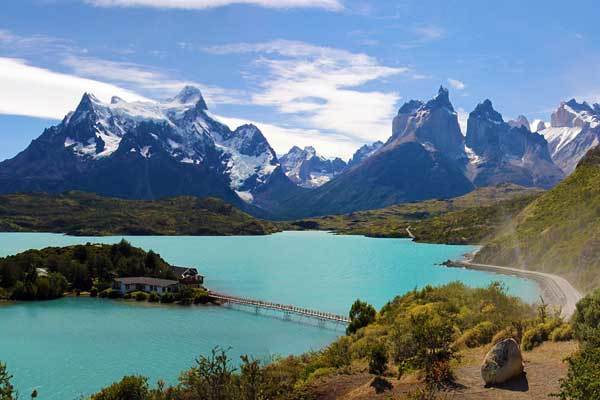
Patagonia is without a doubt a land of extremes. In the west, the land is home to some of the most beautiful temperate rainforests on the planet whilst the east experiences some of the most ferocious winds in the Americas. Patagonia is also home – quite surprisingly – to the world’s seventh-largest desert.
Patagonia Wildlife
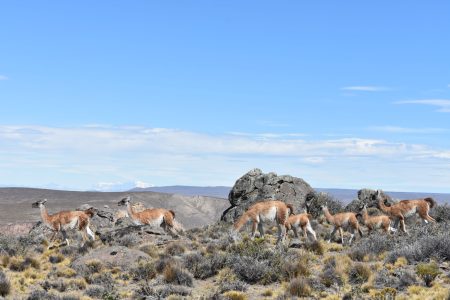
Guanacos in Patagonia National Park
Nature enthusiasts are no doubt wondering what animals you will see along the trails of Patagonia. The answer is a lot.
No matter where you hike in Patagonia, you are sure to see an abundance of birdlife. Look out for different woodpecker species in the forests and an abundance of waterbirds around the rivers and Lagunas. Massive condors are often spotted soaring above the desert.
The seemingly barren lands alongside the roads of southern Argentina are home to a surprising array of creatures. You can’t miss the thousands of shaggy guanacos. If you pay attention, you will probably also spot some foxes and even skunks.
I lucked out on my Patagonia backpacking trip. Not only did I get to see a Huemel (an endangered Chilean deer), but also had a face-to-face encounter with a Puma!
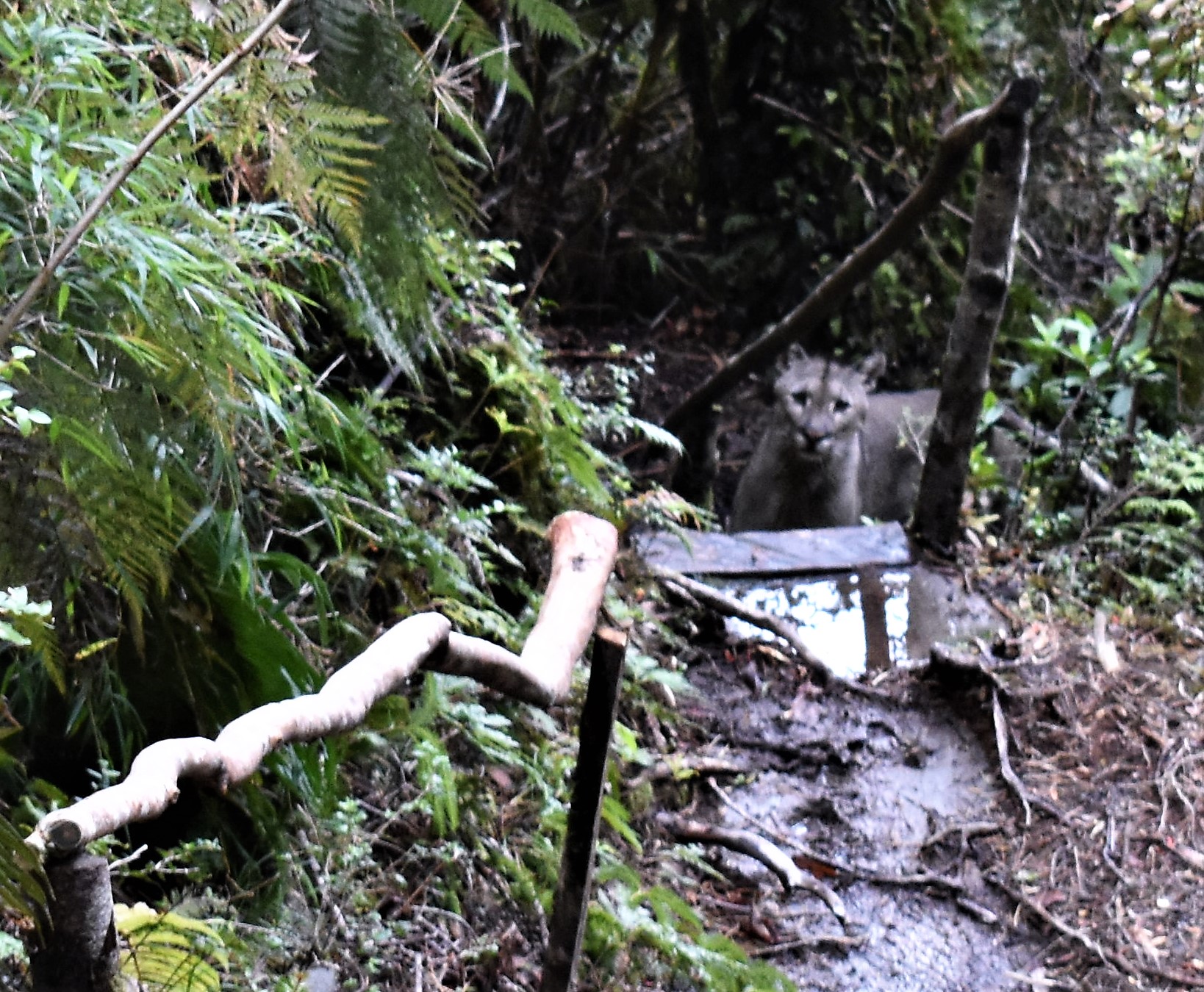
I managed to take a -not very good- pic of the curious cat
You can increase your chances of animal sightings by getting out early and always paying attention to your surroundings. However, luck plays a big role!
Patagonia Hiking Trails Are Easy To Follow
Almost all major treks in Patagonia are on well-worn trails. There is very little chance of getting lost. Even the lesser-known routes had some of the clearest markings I’ve seen anywhere.
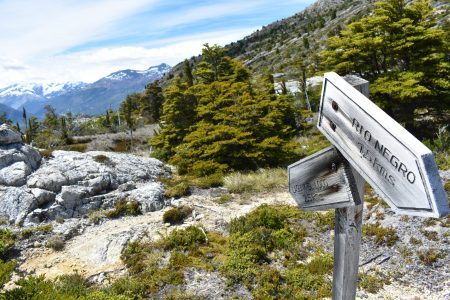
A trail marker along one of Chile's many hiking routes
Ranger huts are dotted along the bigger trails. The park authorities put a lot of effort into keeping the trails clear and taking care of the infrastructure. This is why you shouldn’t complain about paying the entrance fee required for most reserves.
Popular Hiking Routes in Patagonia
Being such a wild and beautiful landscape, Patagonia is packed with literally hundreds of trekking routes. There are hundreds of options for day hikes and multi-day treks.
The three most popular trekking routes in Patagonia are the Torres Del Paine Full Circuit Trek, the Torres W Trek, and the Fitz Roy Trek. All three treks offer something very different in terms of landscapes and difficulty.
Below is a brief description of each route.
Torres Del Paine Full Circuit Trek
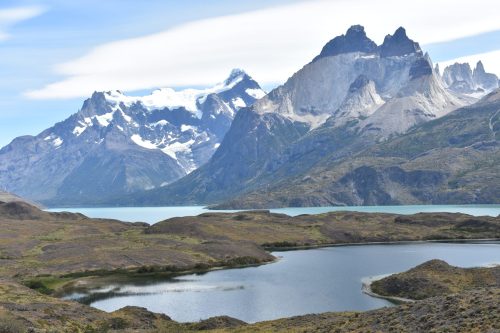
Torres Del Paine National Park
One of the greatest and undiscovered treks on earth, the Torres Del Paine Full Circuit is a brilliant mix of stunning landscapes and unrivalled panoramic views.
The trail is 130km long and trekkers generally take 7 to 9 days to complete it, although often more experienced trekkers do it in less than 5 days!
Torres del Paine National Park was designated a World Biosphere Reserve by UNESCO in 1978 and is home to some of the most diverse flora and fauna in South America.
The Full Circuit leads trekkers on the standard W Trek before continuing around the back end of the park to Refugio Dickson. Hikers then climb up and over John Gardner Pass before descending back down to Campamento Grey.
See my complete guide to the Torres del Paine O trek.
Torres Del Paine W Trek
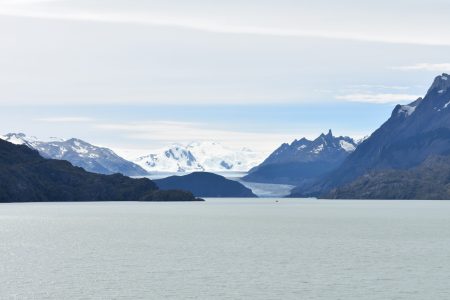
Grey Lake with Grey Glacier in the background, the start of the W Trek
Probably the most popular trek in Patagonia, the Torres Del Paine W Trek is fast becoming one of the most well-respected short hikes in the world due to the trail’s incredible scenery.
The trek generally takes in the region of 5 days to complete (depending on fitness) and leads visitors into the very heart of the national park through vibrant forests, soaring granite peaks, and colossal glaciers.
The trail is 100km long and begins with an excellent boat ride near the Grey Glacier and finishes with a beautiful sunrise at the famous Torres on the last morning.
Fitz Roy Trek
One of the most well-known mountains in South America, Mount Fitz Roy has been an emblem of Patagonia for many years.
At 3,375m, the jagged granite spines as you enter the small village of El Chaltén. Also known as Cerro Chaltén, Mount Fitz Roy is located on the border between Argentina and Chile on the Southern Patagonian Ice Field.
The Fitz Roy hike is generally around 30km in length and takes 3-4 days to complete depending on how much walking you wish to do each day.
Best Short Hikes in Patagonia
Although Patagonia is home to some incredible multi-day hikes, there are actually countless shorter hikes available for visitors with a little less time on their hands.
Day hikes to Mount Fitz Roy are extremely popular as you can get the classic peak photo to take home!
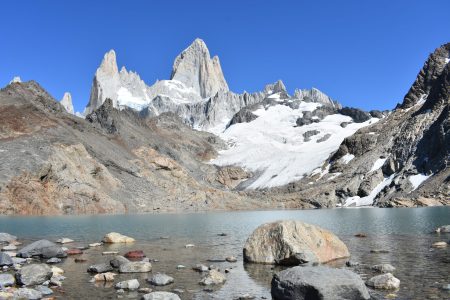
Mount Fitzroy view from Laguna Los Tres. One of Patagonia's most famous sights!
There are also some fantastic short hikes if you want to visit a glacier, such as the Cerro Castillo Glacier walk and the El Morado Glacier Trek.
See our guide to Patagonia day hikes.
Planning Your Patagonia Trek
Here are some of the key considerations when hiking Patagonia.
Chilean Patagonia Vs Argentinian Patagonia
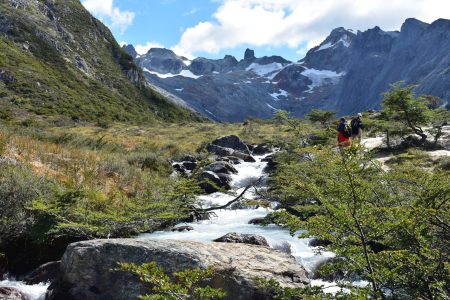
A short and popular trail to Laguna Esmeralda outside Ushuaia
Patagonia overlaps the border into the southernmost parts of Chile and Argentina. Despite being close to each other, the two sides are pretty distinct. Luckily, it is easy to cross the border and spend time in both countries.
Patagonia Argentina is the more popular region for tourists. As a result, the trails get very busy over peak season (November-March). Between mountains, the landscape is surprisingly flat, dry, and rocky. Route 40 is a popular road for motorcyclists. Argentina is home to some of the most famous places for hiking in Patagonia. These include El Chalten (Fitz Roy) and Ushuaia.
By contrast, Chilean Patagonia is much greener and more mountainous. The Caraterra Austral is the only main road through this region. It runs from Puerto Montt and ends in O’ Higgens. Along this route, you will find gushing waterfalls, fjords, thriving forests, and even volcanos.
To be honest, I fell in love with the Chilean side of Patagonia. The trails are uncrowded and there are a ton of hidden gems to discover. The Caraterra Austral is probably also the safest and easiest road in the world for hitchhiking. This is a great way to meet people and practice your Spanish.
Torres Del Paine, probably the most famous Patagonian park, is on the Chilean side.
Do I Need To Book In Advance When Hiking In Patagonia?
The more popular routes often limit the number of trekkers and you’ll need to book early to avoid disappointment. Campsites also book up early and you’ll often need to prove you have a booking to obtain a permit – this is only necessary on certain treks, particularly in the Torres Del Paine region.
A good rule of thumb is to always assume you will need an advance booking. For small reserves, you can get these on the same day but often need to reserve online.
Where To Sleep When Hiking In Patagonia
Campsites
If you have booked a multi-day trek in Patagonia, chances are your only accommodation options are in tents. Campsites along famous routes like the W and O Treks in Torres Del Paine need to be booked well in advance online.
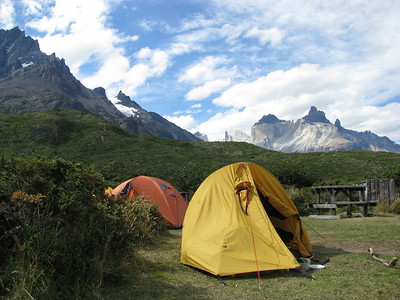
Camping is the cheapest form of accommodation in Patagonia - photo credit: Inacio Gueberoff
If you are on a tight budget, camping is the most affordable option to stay in towns close to the trails. Most official campsites cost around $10 a night and include bathrooms.
Some campsites have a small kitchen. However, I would recommend traveling with your own camp cooking equipment.
You can find a fair amount of free campsites throughout the region. If you download Maps Me app, you will see these free sites are marked. This is generally a great app to have while backpacking Patagonia. It shows many of the trails, even those which are not marked well.
Hostels, Hospedajes and Refugios
Hostels are always a great option for budget travelers. Most towns have some sort of hostel accommodation where you can spend the night before or after a hike.
On hikes in Patagonia, you will be able to find refugios. These small, locally run accommodations are particularly common on the Argentina side. As well as being warmer and more comfortable than a tent, Refugio owners usually cook delicious local meals. This ‘luxury’ comes with a much higher price tag than a hostel. I’d recommend staying in a nice refugio at least once for the experience.
If you are visiting Chilean Patagonia, you are bound to see hospedajes. Hostels are not so common in these parts. Hospedajes offer small and simple private rooms with access to a kitchen and bathroom. You can also usually buy meals at an extra cost. Chilean hospedajes were some of my favorite places to stay on my travels. The owners are welcoming and there is always a wood stove burning! These help a lot if you need to dry your soaked hiking gear.
When is the Best Time to Trek In Patagonia?
The brilliant thing about trekking in Patagonia is that all of the treks never reach high altitudes, therefore the region is made accessible all year round.
To give you a sense of the seasons, we have written an overview of each below. See more detailed information on the best time to hike Patagonia.
Spring - September to November
If you want warm, clear weather but without crowds, this is the perfect time of year to visit the park.
Although it’s certainly not as warm as the high summer months, the skies during Spring are still clear and you’ll get incredible views across the wild landscapes.
Spring is also the best season to see flowering flora in the region as well as wildlife breeding season.
Summer - December to March
This is the high season for both temperatures and tourists. The trails are at their capacity during this period and the parks often feel quite busy.
However, the trade-off is fantastic weather to travel in. The summer months are also the time in which alternative activities such as horse riding, mountain biking, and kayaking are possible. Probably the best period for the active type or for inexperienced trekkers.
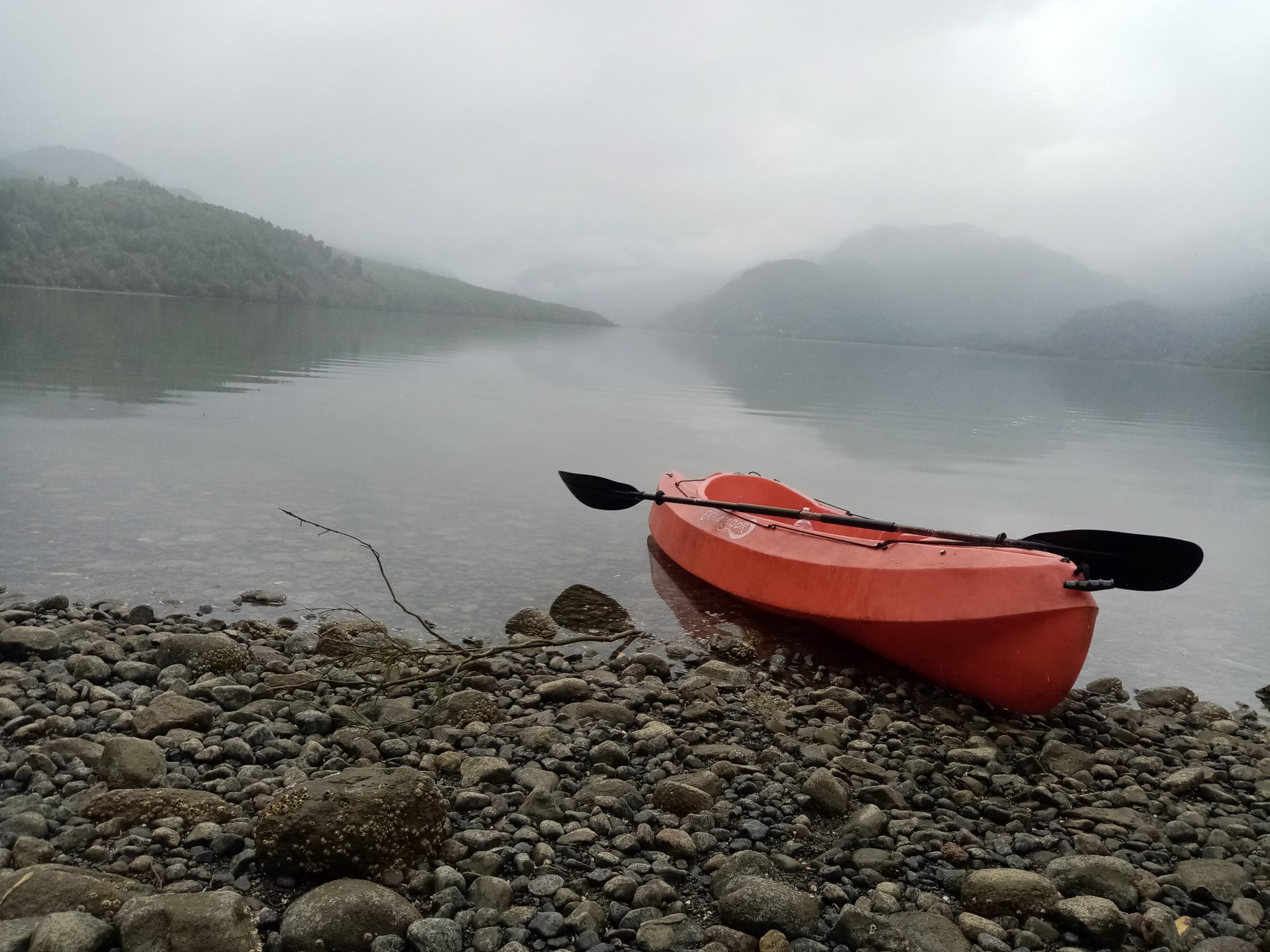
You can rent kayaks or book kayaking tours in some places in Patagonia - This was on a misty morning kayaking the fjord in Puyuhuapi, Chile
Fall - March to June
Probably my favourite season. The landscape simply comes alive with blazing colours as the trees and grasses begin their journey into winter.
The trails also begin to empty out during the Fall and the clear landscape views are still common. Be wary though, ferocious winds are frequent during this period and you’ll need to bring the appropriate gear.
Winter - June to August
Although the majority of refugios are closed during this period, this season is certainly the quietest and you’ll often have the trails to yourself.
This is also the coldest period with strong winds, frequent storms, and wintery nights. Most suitable for hardy trekkers who are looking for a quiet experience in the wilds of Patagonia.
Packing List: What Gear Do I need to Trek in Patagonia?
The trekking gear you choose to take with you to Patagonia will very much depend on what route you intend to take and what season you intend to trek in.
To help you prepare we have provided a comprehensive multi-day trek packing list.
The packing list provided includes a number of essential trekking items. The gear we recommend has been tried and tested by countless trekkers and will serve you well on any multi-day trekking experience.
If you plan to trek in Patagonia independently then you’ll need to keep your backpack weight down. Many of these items such as sleeping bags, tents, trekking poles, etc. can be rented at park entrances across Patagonia. However, I strongly recommend bringing the the important pieces of kit
What Does Patagonia Trek Cost? What Permits Do I Need?
Tourists entering Chile and Argentina from America and the UK do NOT need a visa if the intended trip is under 90 days. If you plan to stay longer than three months then you will need to consult with your local embassy as to the policies regarding this.
Honestly, the easiest thing to do is make a quick border crossing to the other country and return for a renewed 90 days. The authorities are well aware that tourists do this and are not too bothered. However, things change quickly in these parts so best to double-check.
Depending on where you plan to trek, a trekking or park permit may be needed. For instance, trekkers looking to hike in Torres Del Paine National Park are required to have a permit which needs to be booked and paid for online. You will also need to produce proof of campsite bookings.
If trekking with an operator this should all be taken care of by them prior to your trip – always check though.
For the Fitz Roy trekking region there is no permit required.
Recommended Patgonia Guidebook
The Lonely Planet Trekking in the Patagonian Andes (Travel Guide) is one of the most detailed, yet an easy-to-digest guide to the Patagonian Andes. It has most of the treks and routes in it.

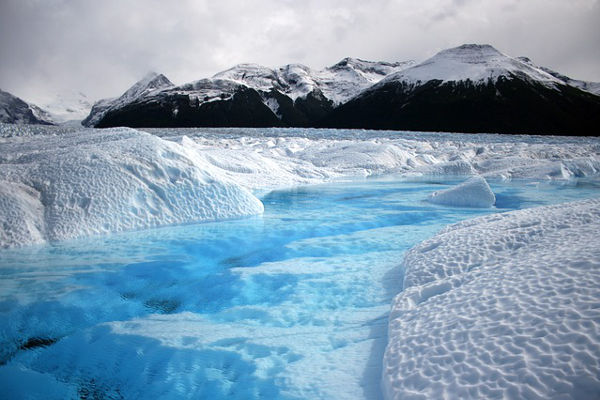
simple and clear blog and the easiest I found yet after searching blogs and sites for nearly a month
I am an experienced solo traveller with flexibility approach so the blog is perfect for me
Hi Ghada, glad that you have found this useful!